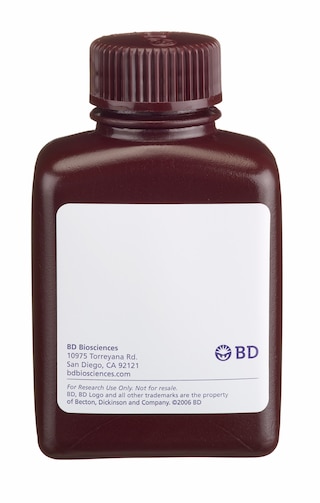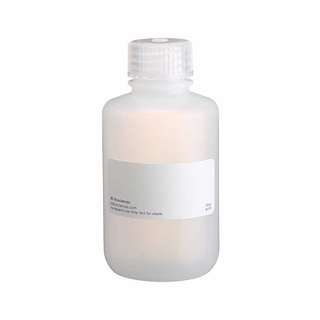-
Reagents
- Flow Cytometry Reagents
-
Western Blotting and Molecular Reagents
- Immunoassay Reagents
-
Single-Cell Multiomics Reagents
- BD® OMICS-Guard Sample Preservation Buffer
- BD® AbSeq Assay
- BD® OMICS-One Immune Profiler Protein Panel
- BD® Single-Cell Multiplexing Kit
- BD Rhapsody™ ATAC-Seq Assays
- BD Rhapsody™ Whole Transcriptome Analysis (WTA) Amplification Kit
- BD Rhapsody™ TCR/BCR Next Multiomic Assays
- BD Rhapsody™ Targeted mRNA Kits
- BD Rhapsody™ Accessory Kits
-
Functional Assays
-
Microscopy and Imaging Reagents
-
Cell Preparation and Separation Reagents
-
- BD® OMICS-Guard Sample Preservation Buffer
- BD® AbSeq Assay
- BD® OMICS-One Immune Profiler Protein Panel
- BD® Single-Cell Multiplexing Kit
- BD Rhapsody™ ATAC-Seq Assays
- BD Rhapsody™ Whole Transcriptome Analysis (WTA) Amplification Kit
- BD Rhapsody™ TCR/BCR Next Multiomic Assays
- BD Rhapsody™ Targeted mRNA Kits
- BD Rhapsody™ Accessory Kits
- United States (English)
-
Change country/language
Old Browser
This page has been recently translated and is available in French now.
Looks like you're visiting us from {countryName}.
Would you like to stay on the current country site or be switched to your country?



.png)

Analysis of Src (pY418) in human T leukemia cells and peripheral blood lymphocytes. Jurkat cells (ATCC TIB152, left panel) and human peripheral blood mononuclear cells (PBMC, middle panel) were either treated with 1μM Staurosporine (EMD Biosciences, Cat. No. 569397) for 2 hours at 37ºC (shaded histogram) or untreated (open histogram). The cells were fixed (BD Cytofix™ buffer, Cat. No. 554655) for 10 minutes at 37°C, permeabilized with BD Phosflow™ Perm Buffer III (Cat. No. 558050) on ice for 30 minutes, and then stained with PE Mouse anti-Src (pY418, Cat. No. 560094). Lymphocytes were selected by their scatter profile during analysis of the PBMC. The data demonstrates that the level of phosphorylation of Src (pY418) decreases when protein kinase activity is inhibited by the treatment. Flow cytometry was performed on a BD FACSCalibur™ flow cytometry system. The specificity of mAb K98-37 was confirmed by western blot analysis (right panel) using unconjugated Rabbit anti-Src (Cell Signaling Technology, Cat. No. 2123, left blot) and unconjugated Mouse anti-Src (pY418) (right blot) monoclonal antibodies on lysates of Jurkat cells that were untreated (lanes 1) or treated with Staurosporine for 1 hour (lanes 2) or 2 hours (lanes 3). Src (pY418) is identified as a band of 60 kDa that is reduced by Staurosporine treatment.

.png)

BD™ Phosflow PE Mouse anti-Src (pY418)

BD™ Phosflow PE Mouse anti-Src (pY418)
.png)
Regulatory Status Legend
Any use of products other than the permitted use without the express written authorization of Becton, Dickinson and Company is strictly prohibited.
Preparation And Storage
Recommended Assay Procedures
Either BD Cytofix™ fixation buffer or BD Phosflow™ Fix Buffer I may be used for cell fixation. Any of the three BD Phosflow™ permeabilization buffers may be used.
Product Notices
- This reagent has been pre-diluted for use at the recommended Volume per Test. We typically use 1 × 10^6 cells in a 100-µl experimental sample (a test).
- Source of all serum proteins is from USDA inspected abattoirs located in the United States.
- Caution: Sodium azide yields highly toxic hydrazoic acid under acidic conditions. Dilute azide compounds in running water before discarding to avoid accumulation of potentially explosive deposits in plumbing.
- For fluorochrome spectra and suitable instrument settings, please refer to our Multicolor Flow Cytometry web page at www.bdbiosciences.com/colors.
- Please refer to www.bdbiosciences.com/us/s/resources for technical protocols.
Companion Products






The non-receptor protein tyrosine kinases of the Src family have similar domain structures with considerable sequence homologies. They are associated with cell membranes and are activated by a wide variety of cell-surface receptors. Through their participation in cell-signaling cascades that mediate an array of cellular responses, they control essential cellular activities.
Src, the prototype of the Src family, is encoded by the SRC protooncogene, which is a homolog of the v-Src gene of the Rous sarcoma virus. Src's oncogenic potential may be a consequence of its role as a regulator of cell growth, morphology, motility, and adhesion. The protein contains domains that mediate protein-protein interactions and regulation of its tyrosine kinase activity. Mechanisms that regulate Src activity include phosphorylations of serines and tyrosines in most of the domains and interactions with receptor proteins, integrins, and other binding proteins. In particular, autophosphorylation at tyrosine 418 (Y418) activates tyrosine kinase activity. Phosphorylations at other sites are mediated by kinases such as cdc2, CSK, and CHK in signaling cascades and may up- or down-regulate Src activity.
The K98-37 monoclonal antibody recognizes the phosphorylated Y418 in the protein kinase domain of activated Src. The orthologous phosphorylation sites in chicken, mouse, and rat Src are Y415, Y423, and Y418, respectively. Because of sequence similarities in this region, it may also recognize the homologous sites of some other Src family members: Lyn (pY396), Fyn (pY420), Hck (pY410), Lck (pY394), and Yes (pY425).

Development References (3)
-
Alvarez RH, Kantarjian HM, Cortes JE. The role of Src in solid and hematologic malignancies. Development of new-generation Src inhibitors. Cancer. 2006; 107(8):1918-1929. (Biology).
-
Arias-Salgado EG, Lizano S, Sarkar S, Brugge JS, Ginsberg MH, Shattil SJ. Src kinase activation by direct interaction with the integrin β cytoplasmic domain. Proc Natl Acad Sci U S A. 2003; 100(23):13298-13302. (Biology).
-
Frame MC. Newest findings on the oldest oncogene; how activated src does it. J Cell Sci. 2004; 117(7):989-998. (Biology).
Please refer to Support Documents for Quality Certificates
Global - Refer to manufacturer's instructions for use and related User Manuals and Technical data sheets before using this products as described
Comparisons, where applicable, are made against older BD Technology, manual methods or are general performance claims. Comparisons are not made against non-BD technologies, unless otherwise noted.
For Research Use Only. Not for use in diagnostic or therapeutic procedures.